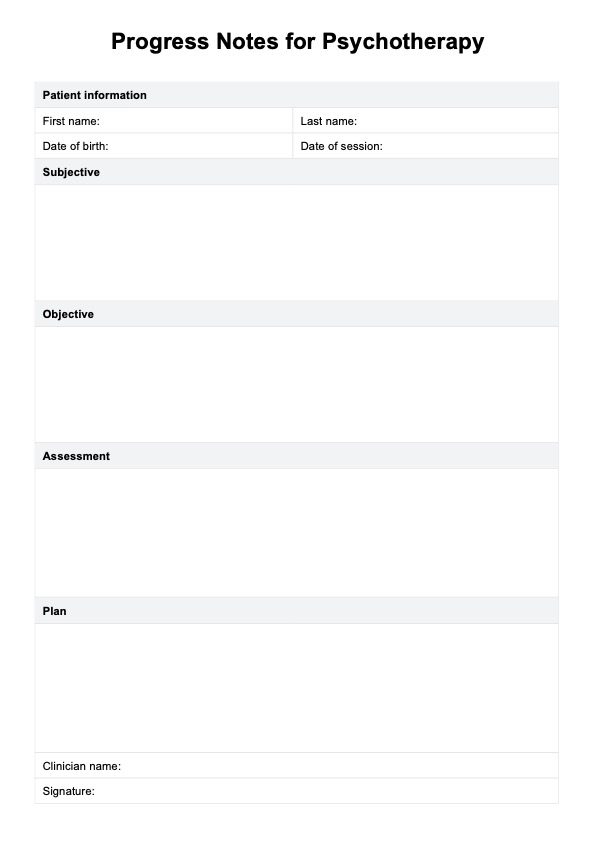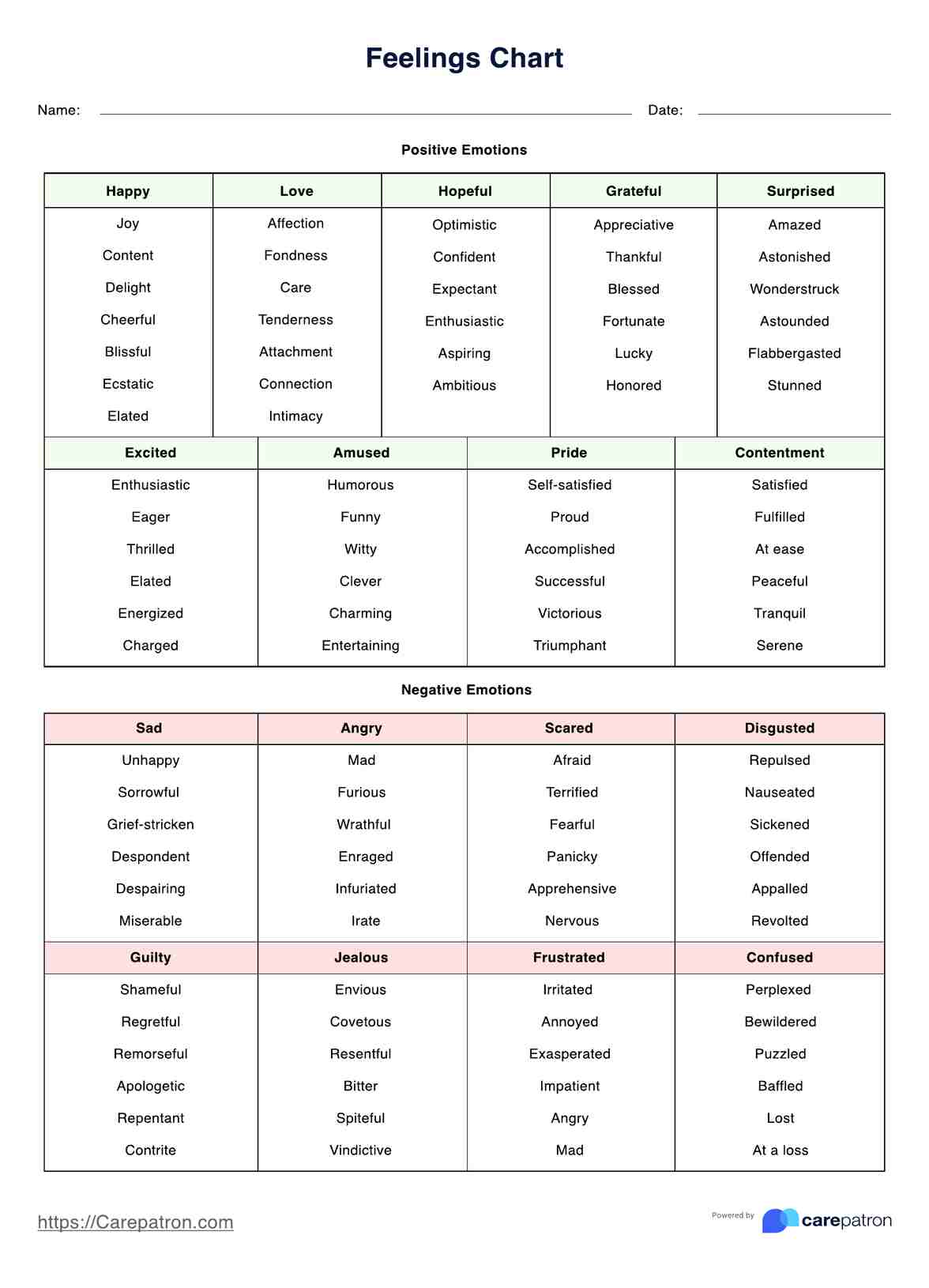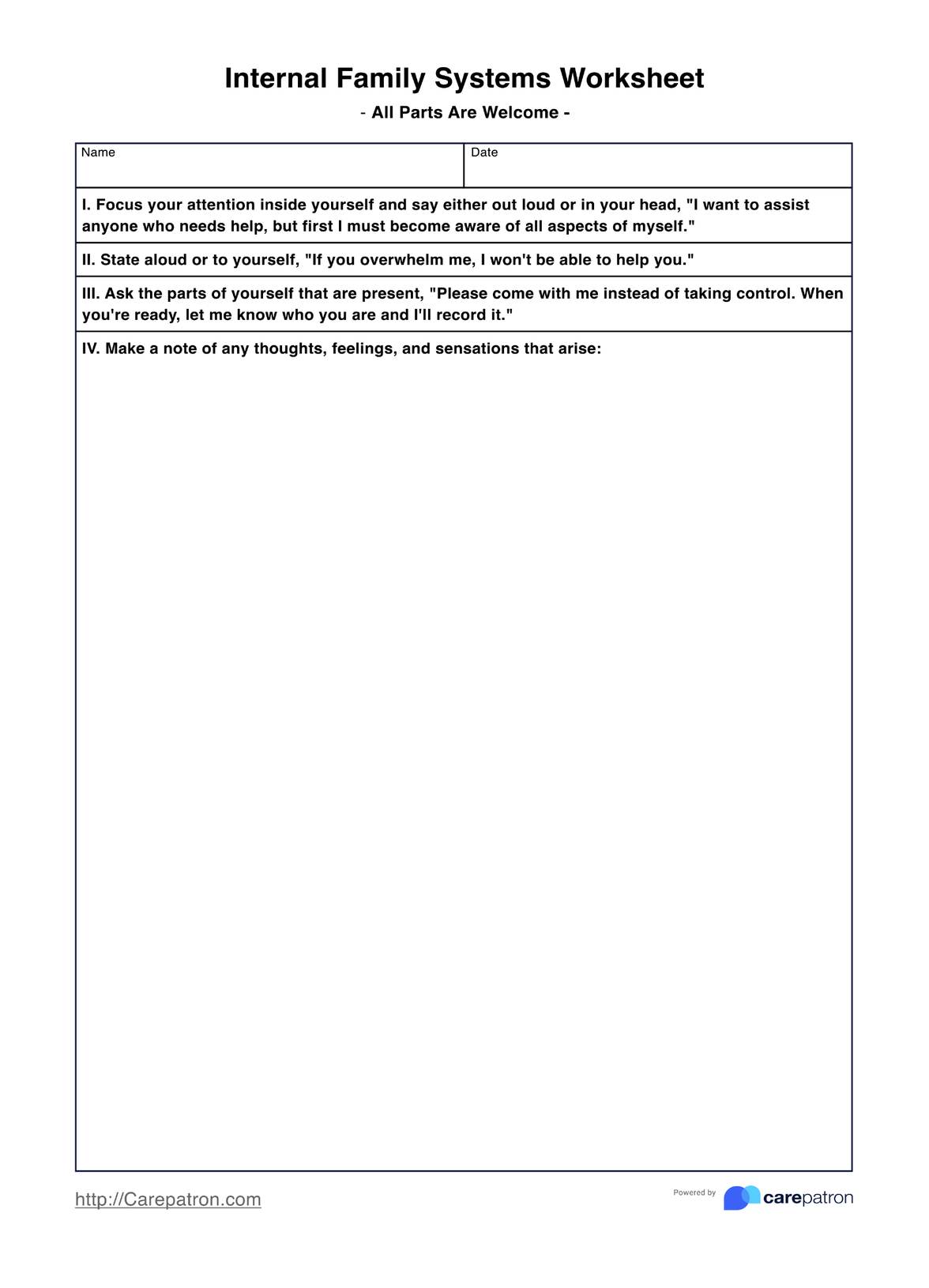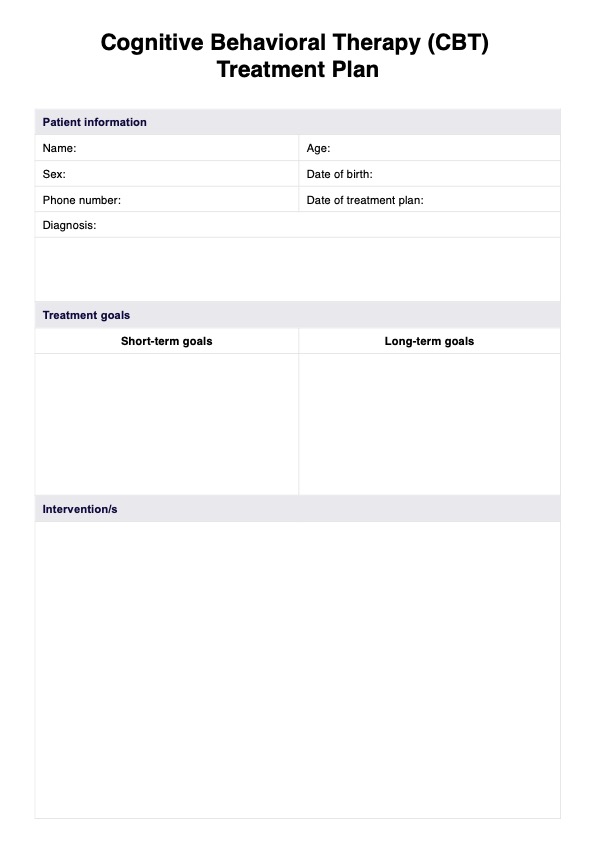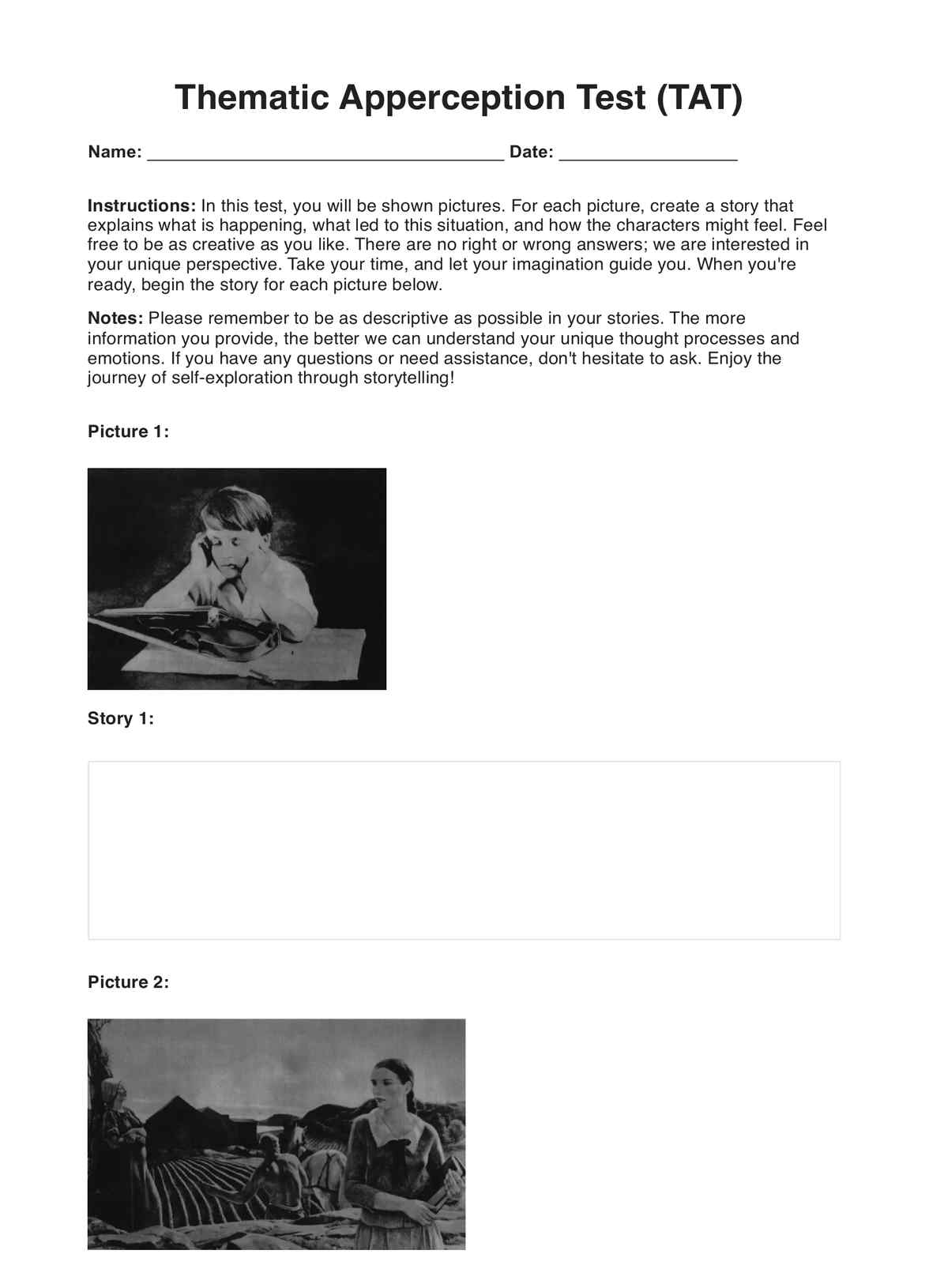VAK Test
Discover your preferred learning style with the VAK Test. Understand how you remember things best in different ways. Get relevant insights now.


What are VAK learning styles?
Have you ever struggled to grasp a concept while others seemed to understand it effortlessly? Perhaps you're more inclined to absorb information through practical, hands-on experiences rather than lectures or visual aids. This variability in how individuals learn best is the essence of different learning styles, one of which is known as the VAK learning styles model.
VAK represents three primary learning modalities: Visual, Auditory, and Kinaesthetic. Visual learners prefer to process information through visual aids such as diagrams, charts, and videos. They grasp concepts more effectively when presented with images or written instructions. On the other hand, auditory learners thrive in environments where information is conveyed through spoken words. They excel in lectures, discussions, and audio recordings, absorbing knowledge primarily through listening.
Meanwhile, kinaesthetic learners learn best through physical activities and hands-on experiences. They prefer to engage in practical tasks, experiments, or simulations that allow them to manipulate objects and interact with their environment.
Understanding VAK learning styles is crucial for educators and learners alike. By recognizing and accommodating these different modalities, educators can tailor their teaching methods to meet students' diverse needs better. Likewise, learners can leverage their preferred learning style to optimize their study strategies and enhance their academic performance.
VAK learning styles encompass the visual, auditory, and kinesthetic modalities, highlighting how individuals absorb and process information. Whether you're a visual learner who thrives on diagrams, an auditory learner who prefers lectures, or a kinesthetic learner who learns best through hands-on experiences, acknowledging and adapting to these preferences can significantly impact learning outcomes.
VAK Test Template
VAK Test Example
Accommodating learning styles
Understanding the intricacies of different learning styles helps educators to create inclusive and effective teaching strategies. Let's delve into the three styles: visual, auditory, and kinesthetic.
Visual learning style
Visual learners grasp information best through visual aids such as pictures, diagrams, flip charts, graphs, and videos. They tend to have strong spatial awareness and can easily visualize concepts. The characteristics of visual learners include a preference for reading and taking detailed notes during lectures and an ability to remember faces, places, and written instructions vividly.
Educators can incorporate visual elements and ideas into their teaching to cater to visual learners, such as using PowerPoint presentations and pictures, providing handouts with diagrams, or utilizing educational videos. For example, when explaining a complex process, a teacher might use a flowchart or a diagram to help visual learners understand the sequence of steps.
Auditory learning style
Auditory learners learn best when they listen to spoken instructions. They have a solid ability to process information through spoken words and talking. They may excel in discussions, lectures, and audio-based learning activities. Auditory learners enjoy participating in debates, storytelling, and verbally explaining concepts to others.
Educators can incorporate lectures, group discussions, podcasts, and verbal explanations into their teaching methods to accommodate auditory learners. For instance, a teacher might encourage learners to engage in peer discussions or use audio recordings to reinforce critical concepts.
Kinaesthetic learners' learning style
Kinaesthetic learners thrive in hands-on activities and experiential learning environments where they can physically engage with materials and activities. They prefer to learn by doing and may need help to stay focused in traditional lecture-based settings. Characteristics of kinesthetic learners include a need for physical activity, a preference for interactive tasks, and a strong sense of spatial awareness.
Educators can include role-playing, experiments, simulations, and interactive tasks to support kinesthetic learners. For example, a science teacher might organize a lab session where students can experiment and manipulate equipment to understand scientific principles firsthand.
Why is it essential for a person to understand their learning styles?
Understanding one's learning style is crucial for several reasons:
- Optimized learning: Knowing your preferred learning style allows you to tailor your study methods to match how you best absorb information, leading to more efficient learning and retention.
- Improved academic performance: By aligning study strategies with your learning style, you can enhance comprehension and performance in educational settings.
- Increased motivation: Recognizing how you learn best can boost confidence and motivation as you feel more capable and engaged in learning.
- Effective communication: Understanding the diverse learning styles of others enables better communication and collaboration in group settings, ensuring everyone's needs are met.
- Enhanced problem-solving: Identifying your learning style helps you approach problem-solving tasks in ways that leverage your strengths, fostering creative and effective solutions.
- Personalized teaching: Educators can better cater to students' needs and preferences by understanding their diverse learning styles, leading to more engaging and effective teaching.
What is a VAK Test?
A VAK Test is a learning styles assessment tool designed to help individuals identify their preferred learning style among Visual, Auditory, and Kinaesthetic modalities. This test evaluates how individuals absorb and process information to determine which learning style resonates most with them.
Participants indicate their preferences in learning situations through questions or scenarios, such as whether they learn best through visual aids, auditory cues, or hands-on experiences.
How does the VAK Test work?
Users can tailor their study strategies to maximize learning effectiveness by understanding their dominant learning modality. Below are the steps to utilize the VAK Test template effectively:
Step 1: Download the template
Access the VAK Test template from the provided link. Save the template to your device for easy access.
Step 2: Read the instructions
Familiarize yourself with the instructions provided within the template. Understand the purpose of the VAK Test and how to proceed with the assessment.
Step 3: Complete the questionnaire
Answer the questions honestly based on your preferences and experiences. Choose the response that best reflects your learning style in each scenario.
Step 4: Score your responses
Once you've completed the questionnaire, take a moment to review your answers. Then, tally the number of responses you've chosen according to the scoring system outlined in the template.
Step 5: Calculate your scores
Sum up the points for each learning style category: Visual, Auditory, and Kinesthetic. Identify which category has the highest score, indicating your dominant learning style.
Step 6: Interpret your results
Refer to the interpretation guide included in the template. Understand the implications of your dominant learning style and how to leverage it for effective learning.
Step 7: Adjust your study strategies
Adapt your study techniques to align with your dominant learning style based on your results. Incorporate visual, auditory, or kinesthetic methods into your learning process for optimal retention and comprehension.
Utilize the VAK Test template regularly to reassess your learning preferences and refine your study approach.
When is it best to use a VAK Test?
The VAK Test is a valuable tool that can be utilized in various scenarios by different practitioners within the field of education, psychology, and training:
- Educators: Use the VAK Test at the beginning of the academic year to understand students' diverse learning styles in the classroom, enabling them to tailor their teaching methods accordingly and ensure inclusive education.
- Psychologists: Employ the test during initial assessments with clients to gain insights into their preferred learning modalities, facilitating the development of personalized treatment plans and interventions that optimize learning and therapeutic outcomes.
- Trainers and coaches: Incorporate it into training programs or coaching sessions to identify the learning styles of participants, allowing trainers to customize content delivery methods and activities to maximize engagement and skill acquisition.
- Parents: Administer it to children at home to identify their preferred learning styles, guiding parents in selecting appropriate educational materials and activities to support their children's learning and academic success.
- Workplace training: Implement the VAK Test in corporate training settings to assess employees' learning preferences, enabling trainers to design training programs that cater to diverse learning styles and enhance knowledge retention and skill development.
Commonly asked questions
VAK learning styles refer to the Visual, Auditory, and Kinesthetic modalities through which individuals prefer to absorb and process information.
You can determine your dominant learning style by taking a VAK assessment test, which typically involves answering questions or scenarios that assess your preferences in learning situations.
Learning styles benefit individuals, educators, and trainers alike, enabling personalized approaches to teaching and learning, leading to enhanced comprehension and engagement.


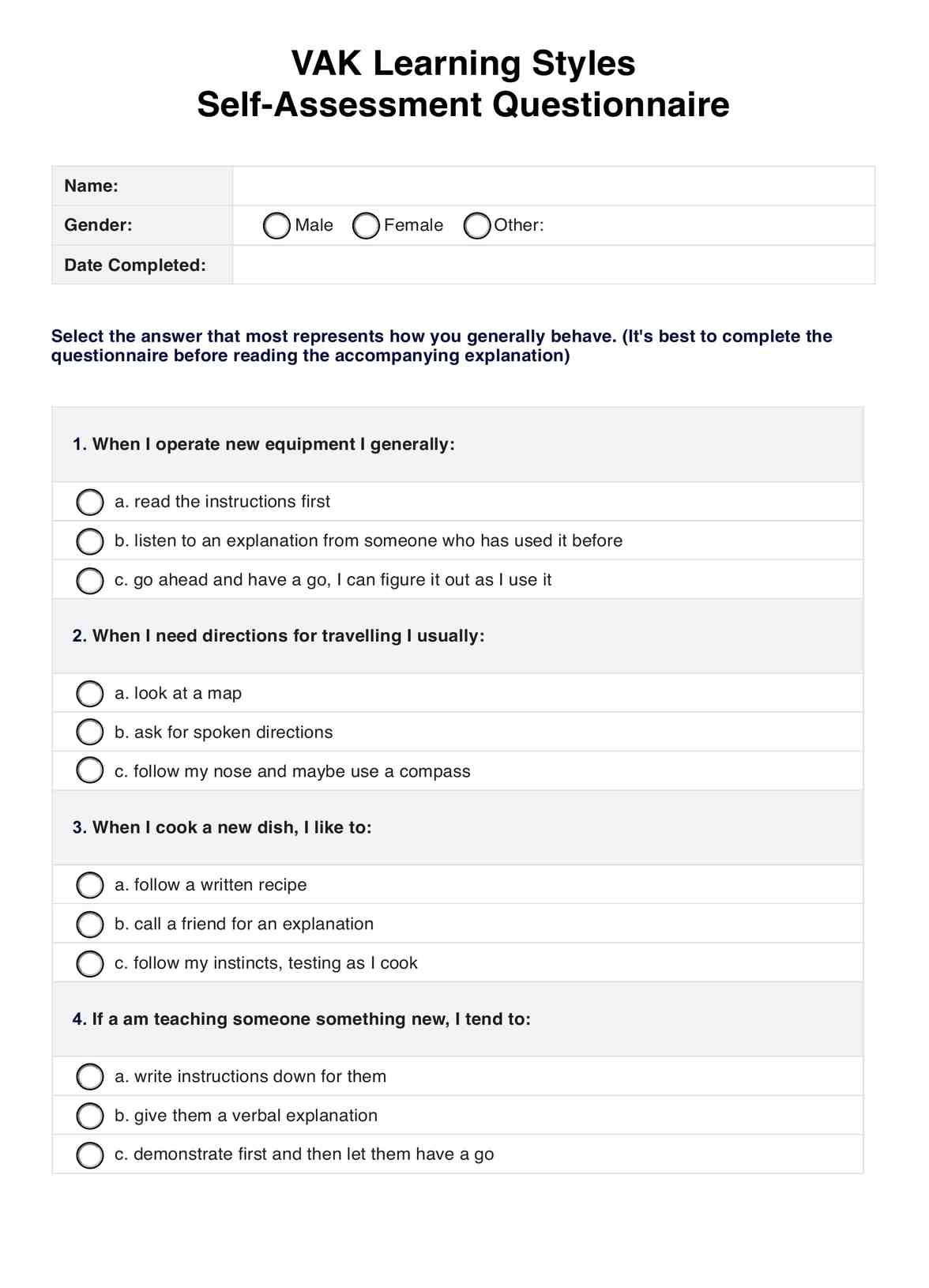
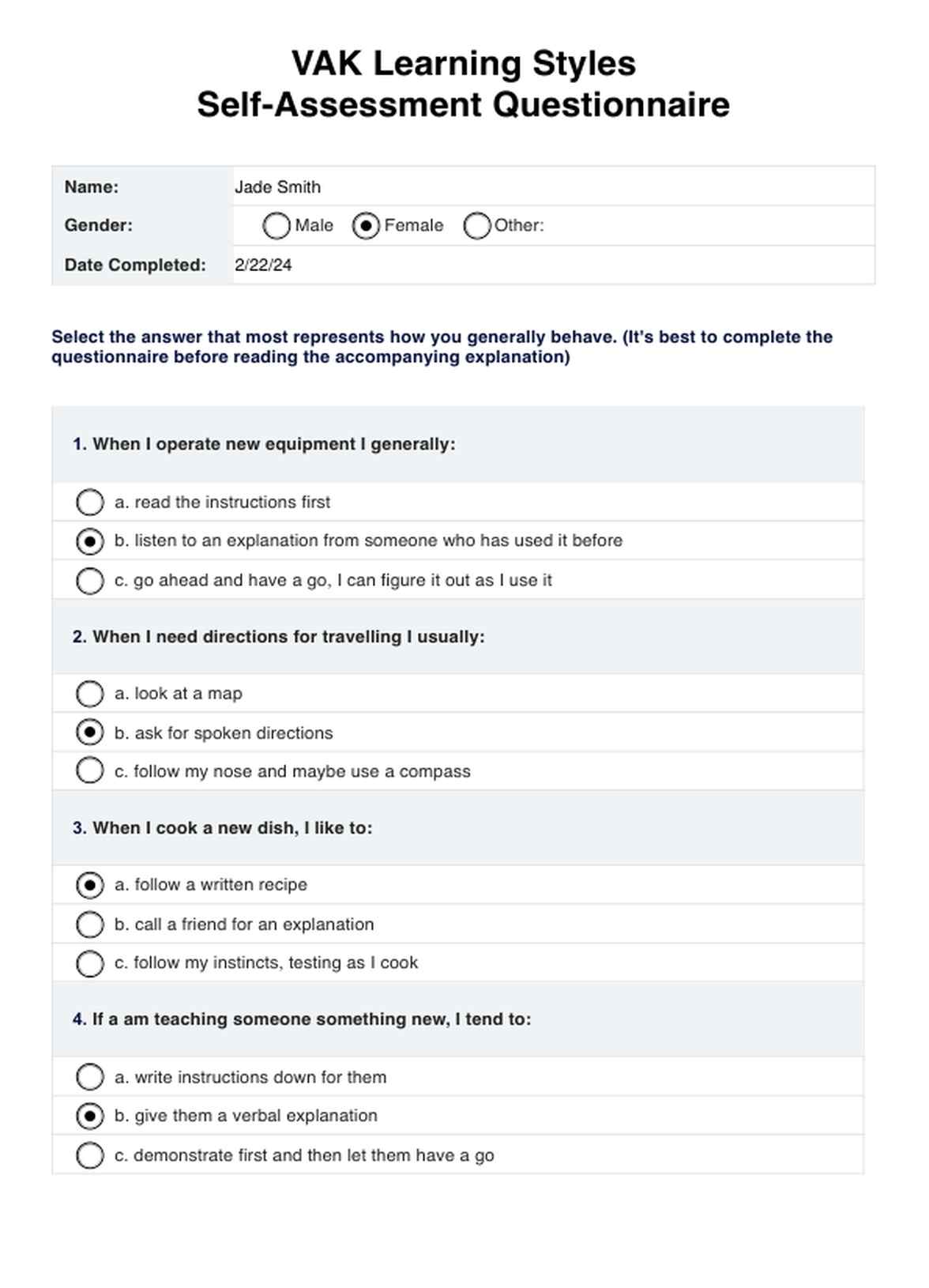

















-template.jpg)

























































































